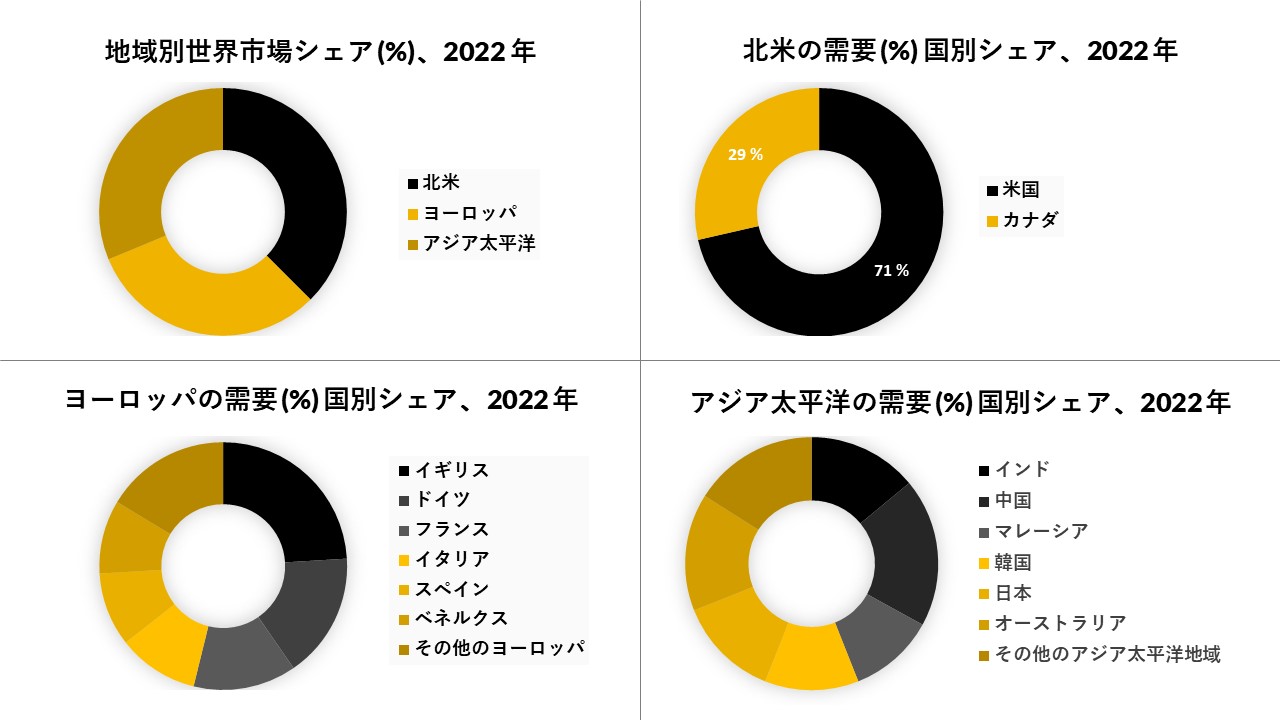尿生殖器疾患および感染症の発生率の上昇は、尿生殖器薬市場の世界的な成長をもたらしました

尿生殖器疾患および感染症の発生率の上昇は、尿生殖器薬市場の世界的な成長をもたらしました。可処分所得の増加と医療インフラの絶え間ない改善、泌尿生殖器疾患の治療のための新規分子の開発におけるR&D活動への投資の増加、パイプライン医薬品の数の増加も、予測期間中に市場を牽引すると予想されます。しかし、偽造医薬品の数が増え、感染症や治療薬についての認識の欠如が、尿生殖器薬の市場を抑制するだろう
主な市場動向
尿路感染症が世界の尿生殖器用医薬品市場を支配
尿路感染症の発生率が増加するにつれて、薬物の需要が増加し、それが今度は世界の尿路感染症治療薬市場を牽引しています。さらに、より効率的な併用薬の発売、新薬の開発・承認、高齢者人口の増加により、世界の尿生殖器用医薬品市場における尿路感染症セグメントの成長が加速することが期待されます。例えば、2017年8月、FDAは成人向けのVabomereを承認しました。Vabomereは抗菌薬であり、複雑な尿路感染症(cUTI)および腎盂腎炎(特定の細菌によって引き起こされる腎臓感染症の一種)の治療に使用される。バボメアにはメロペネムとバボルバクタムが含まれています。2017年12月、FDAは、腎盂腎炎および血流感染(BSI)を含むcUTIを治療するためにプラゾマイシンについてAchaogenが提出したNDA(新薬申請)の審査を受け入れ、処方薬使用料法(PDUFA)に基づく目標行動日を2018.
アジア太平洋地域は最も急成長している地域になると予想されています
アジアは、尿生殖器疾患症例の増加、泌尿生殖器疾患の治療・治療改善の必要性の高まり、尿生殖器疾患に対する意識の高まり、医療費の増加、医療インフラの整備などにより、今後数年間で尿生殖器市場の高い成長率が見込まれています。インドや中国などの発展途上国の人口動態と経済の高まりは、アジア太平洋地域の尿生殖器市場の台頭につながると予想されています
競争環境
世界の尿生殖器市場は、市場プレーヤーの間で高い競争を示しています。主要な市場プレーヤーは、R&Dに多額の資金を投資し、新製品の発売と開発、地理的拡大、コラボレーション、買収など、多くの戦略を生み出して、世界の尿生殖器市場における市場地位を強化しています。例えば、2018年9月:TherapeuticsMD Inc.は、中等度から重度のジスパレニアの治療のためにImvexxy(エストラジオール膣挿入物)を発売しました。世界の尿生殖器市場の主要プレーヤーには、ブリストル・マイヤーズスクイブ社、イーライリリー・アンド・カンパニー、グラクソ・スミスクライン社、アカオゲン社、メリンタ・セラピューティクス社、ウェルスタット・セラピューティクス社、アレルガン・メルク・アンド・カンパニー社、ノバルティス社、ファイザー社などが含まれます
このレポートを購入する理由:
- エクセル形式の市場予測(ME)シート
- 3ヶ月のアナリストサポート

北米(米国およびカナダ)、ラテンアメリカ(ブラジル、メキシコ、アルゼンチン、その他のラテンアメリカ)、ヨーロッパ(英国、ドイツ、フランス、イタリア、スペイン、ハンガリー、ベルギー、オランダおよびルクセンブルグ、NORDIC(フィンランド、スウェーデン、ノルウェー) 、デンマーク)、アイルランド、スイス、オーストリア、ポーランド、トルコ、ロシア、その他のヨーロッパ)、ポーランド、トルコ、ロシア、その他のヨーロッパ)、アジア太平洋(中国、インド、日本、韓国、シンガポール、インドネシア、マレーシア) 、オーストラリア、ニュージーランド、その他のアジア太平洋地域)、中東およびアフリカ(イスラエル、GCC(サウジアラビア、UAE、バーレーン、クウェート、カタール、オマーン)、北アフリカ、南アフリカ、その他の中東およびアフリカ)
